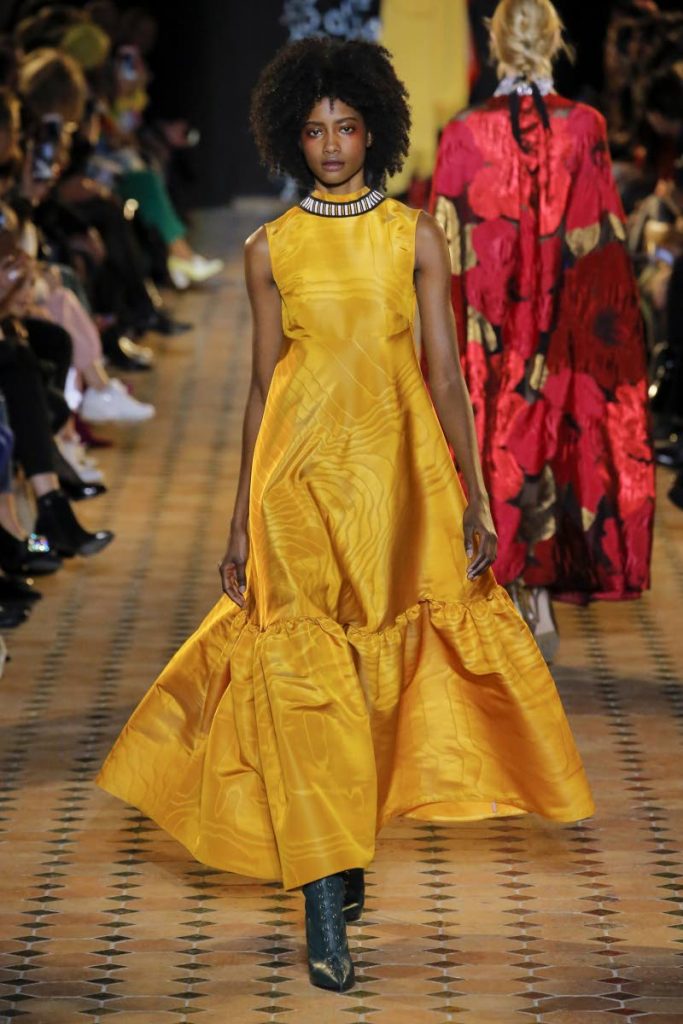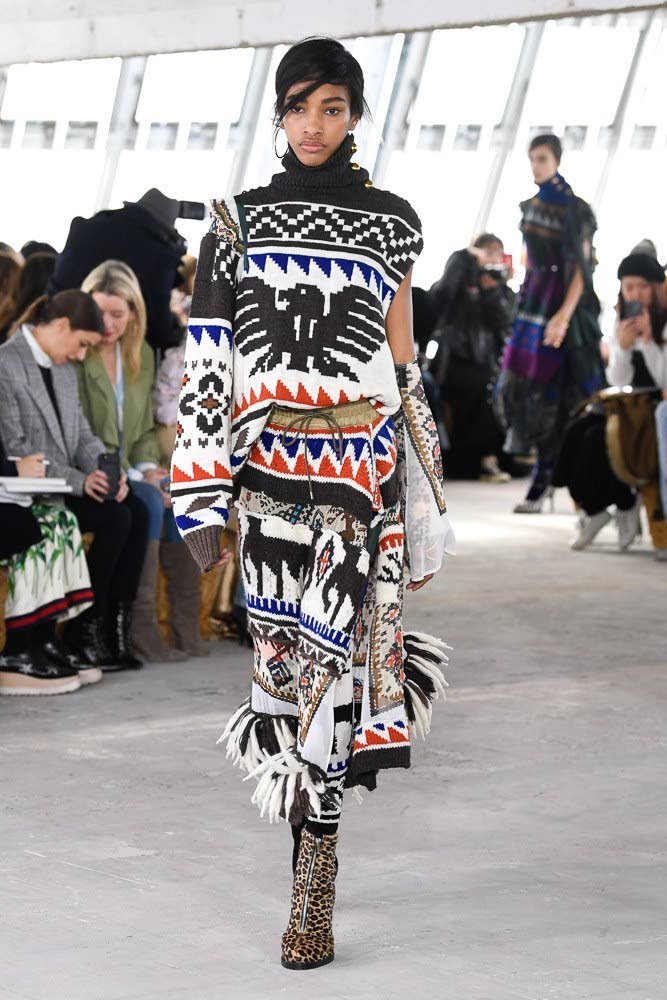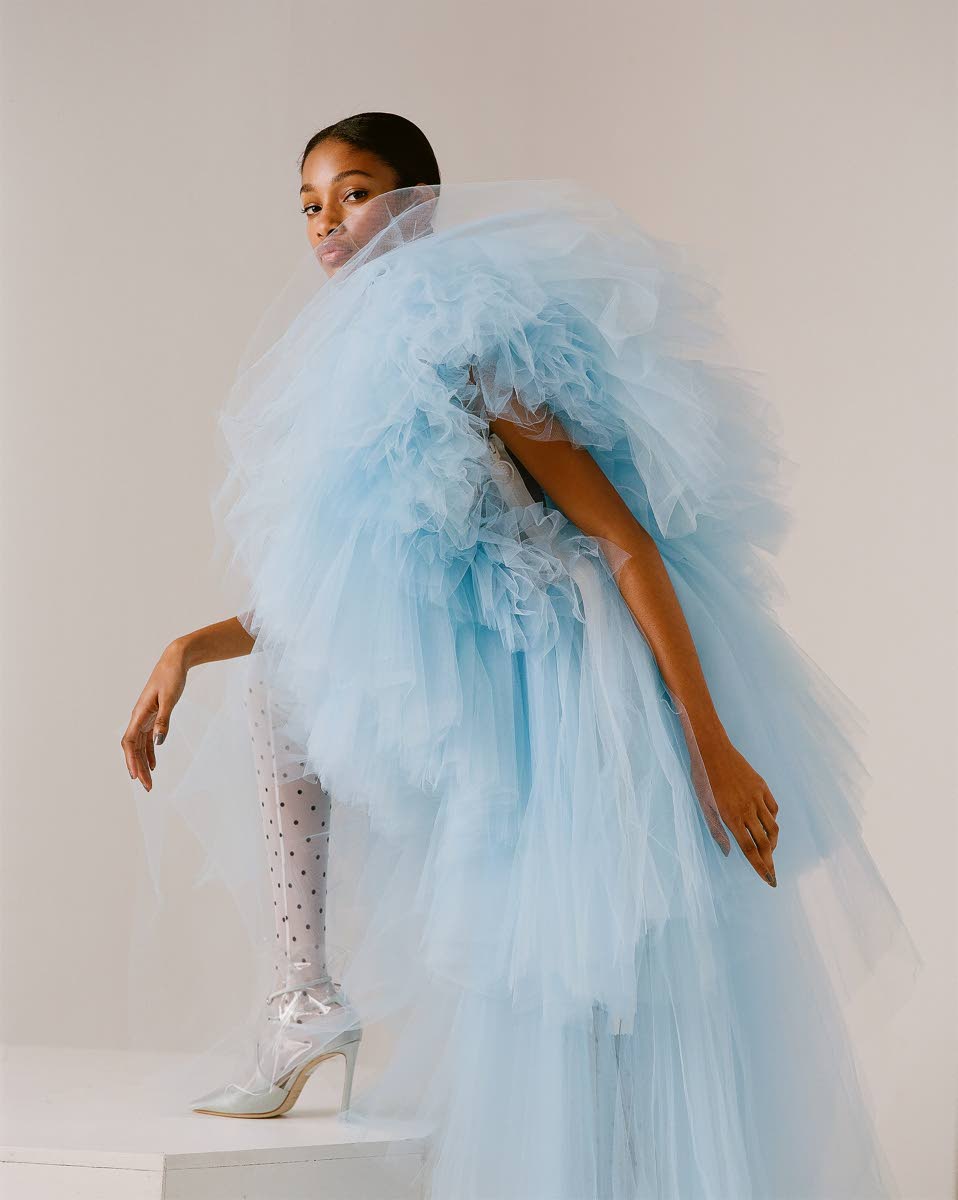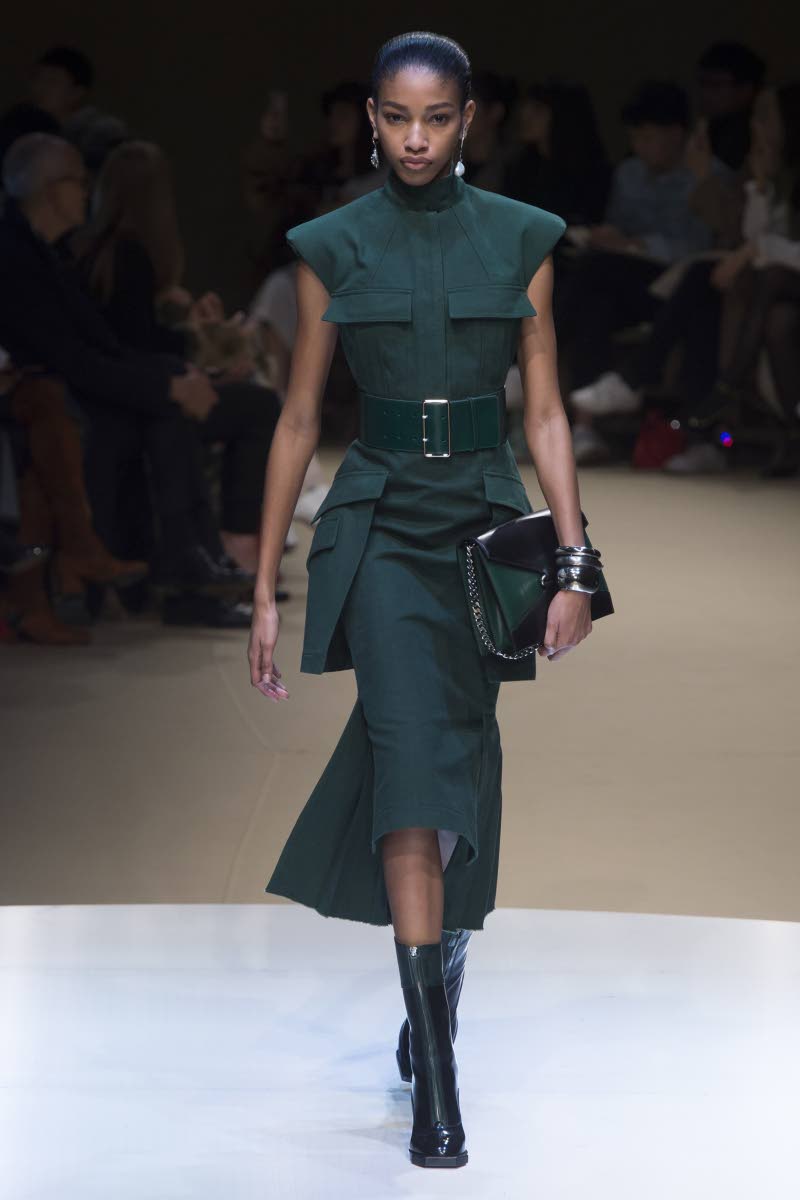A model career?

SO, you think you have the goods to become a great model?
Defining what makes a good model is more difficult than it sounds, according to the experts. For many who desire to make it in the industry, there's a slim chance of becoming a runway star.
The TT models who have made it internationally would have done so with great determination, as well as met strict international criteria for height and body statistics. Hundreds of hopefuls turn up at local modelling workshops, but the successes are few when it comes to international breakthroughs.
Christopher Nathan, who is chief executive of Coco Velvet International Fashion and Model Management, said that of the 1,000 models who have been trained by his agency since 1997, only ten have made it professionally on the international runway. He attributes that rate to the strict criteria laid down for international modelling and the lack of "killer instinct" for success.
"Female models have to between 5ft 9in to 6ft; their waist must be no wider than 24 inches and hips no more than 34 inches. That's why a lot of black models don't get work internationally," Nathan said. For male models the height restriction is between 6ft and 6ft 3in, he said.

The success rate for creating top models is also an international challenge. Of some 2,000 hopefuls who walk through the doors of London's top agency, Models 1, approximately 100 would be signed and, only maybe 15 or 20 will stay for a good few years, CEO John Horner said in a BBC interview.
"I think that it's estimated out of every 100,000 models only one would have the full package for international modelling," Nathan said.
He said that apart from the stringent criteria, another setback was that local models do not have the "killer instinct" that is required for success in an industry with gruelling work schedules, and a lot of rejection along the way.
Horner said models have to learn to deal with rejection. "You've got to learn to cope with rejection, because they're rejected from more jobs than they'll accept," he said.
Nathan has seen TT models succumb to rejection.
"We have sent several models to New York on contract and after one month of pounding the pavement, they return to good, old TT. It is a difficult industry, so in one day a model may attend ten castings and not get selected for any job. It is a lot of rejection in the industry and it is also an exhausting career."
Nathan's most recent international success, Naomi Chin Wing, recently felt the full brunt of how taxing runway life can be. During the Autumn/Winter fashion week in February/March, the teenager did 26 shows, moving around New York, London and Paris.
"The fashion week is centralised in one month, so it's go, go, go. In fact, she had a physical breakdown in Milan and the doctor ordered bed rest so she could not do any shows. So it's not for the feint-hearted," he said.
Another one of his top models, Soowan Bramble, despite having the necessary attributes for the international runways, fell short of the required minimum height.
But, Nathan is continuing his quest to put top models out there and will host Top Model TT on October 14 at Napa, Frederick Street, Port of Spain, to find the next batch of TT international models. He will award ten international contracts for TT models. More info on this project can be found on Coco Velvet International's instagram page.
Nathan noted that Jamaica, South Sudan, Kenya and Nigeria are now modelling "hotspots" as candidates from those countries are finding favour. He is also seeking to establish TT as a modelling hotspot and will be hosting a professional model workshop during the vacation for secondary school students who meet the requirements. The screening interview is on June 24 at Nalis, Abercromby Street Port of Spain, from 1-3 pm.
And while Nathan and others continue to task to refine and hone TT's next top international models, even the international experts admit that defining what makes a good model is no easy task, as well, the time it takes to groom one for proper modelling can take about three years.
In the BBC story on the industry, Robyn Bright, a scout for the Models 1 agency, which is celebrating its 50th birthday this year said, "I don't like to think that we're looking for one thing. If you find somebody who really just stands out, when you see it, it's quite amazing.
"As a scout, it's always the quiet one at the back of the really loud group of girls who are all caked in make-up, who's probably not worked out how to do her face yet, and is really inconspicuous – it's always that one that you see."
Bright is speaking from experience.
Scouted herself outside Topshop on Oxford Street nearly 20 years ago, she built a successful modelling career before moving behind the camera to help find the next generation of models.
There is, of course, no shortage of people keen to pursue it as a career, and the agency has a number of ways to find new faces.
"We go out on the streets, literally," says John Horner, Models 1's CEO. "We go into shops, we run competitions, we go to music festivals.
"We get what we call 'wannabes' who turn up – we get about 2,000 of them every year, who literally walk through the door."
So what's the success rate, when you have that many hopefuls?
"Of those 2,000? I would think we sign up probably 100 in a year in totality," he says. "But of those, only maybe 15 or 20 will sustain, i.e. stay with us for a good few years.
"And in excess of that, we get about 20,000 online applications as well."
While getting signed by an agency is evidently a challenge, the really hard work doesn't start until you're actually on the books.
"There's a misunderstanding that you scout someone today, and they're working tomorrow – they're not," Horner says.
"It takes about three years for a youngster to basically be ready to do proper modelling. It's not something you immediately take to – you learn to do the job."
Horner breaks down some of the requirements:
"You've got to be confident," he says first and foremost.
"You've got to learn to cope with rejection, because they're rejected from more jobs than they'll accept.
"If you're a catwalk model, you've got to learn how to walk.
"You've got to learn how to perform in front of a camera.
"And – you've got to build your book, your portfolio, and build it to the look that we want you to portray as a model."
Building and maintaining that look is practically a 24/7 job in itself, Bright explains.
"We really encourage them to take care of their skin and their hair," she says.
"That's really important because those are the elements that really start to show... sometimes if you get a girl that smokes and has started going out quite a bit, you can really see that.
"I can spot a smoker a mile away. You just can, honestly, it's all in their pores.
"Obviously, there will be an element of it that's down to their own skin and how lucky they are with their genetics. But even some of our new faces I can tell the girls who smoke."

The biggest issue in modelling, of course, is body shape. Would a scout ever advise a model to lose weight?
"I mean, look, that does happen," Bright says. "But it's the way you say it. Because we really support strong not skinny. And if we ever say lose weight, it's just trying to tone up, change their shape.
"We've got a great guy that we work with who will develop a diet plan, a nutrition plan with these girls. So as well as doing light weights with them, they're eating the right things for their bodies to be looking strong and staying strong."
Horner points out that the appetite for a slimmer look has largely been driven by advertisers.
"Models today are infinitely less shapely than they were many years ago, and I think the demands today for a consistency of shape are much higher than they used to be," he says.
"Clients want models who are of a particular proportion. They need a certain height because their clothes look better with a certain height. There's a curve division, which is curvy models, but for the most part, models are sort of straight and slim.
"We're not interested in skinny, or all that sort of stuff where models don't look healthy. They are naturally thin. I would say that that is the look that most clients want today."
Models 1 is far from the only agency to have a curve division, something which John says is partially down to the growing appetite for a wider variety of body shapes in campaigns.
"It's very slow happening in this country, it's very big in America. The thing is, not very long ago, curved girls had a very limited range of retailers they could go to," he says.
"They had [plus-size shop] Evans, and most of it was done online. And a curved girl would feel uncomfortable going into a shop where she had to go straight to the larger garments and so on, so it's quite a challenge for a curved lady... in spite of the fact that 45 per cent of British women are over size 16.
"It's a ridiculous thing really, but it's beginning to happen. And we're beginning to get curved models into curve advertising campaigns as opposed to just curved online."
But, he adds: "Say what you will. Women aspire to exactly the size that they are. So if you showed a size 20 curved model, I don't think you'd find a lot of women aspiring to that.
"You have to feed to what consumers want. They will always say they want something different, but actually, when it comes to it, you portray the woman that they aspire to be."



Comments
"A model career?"